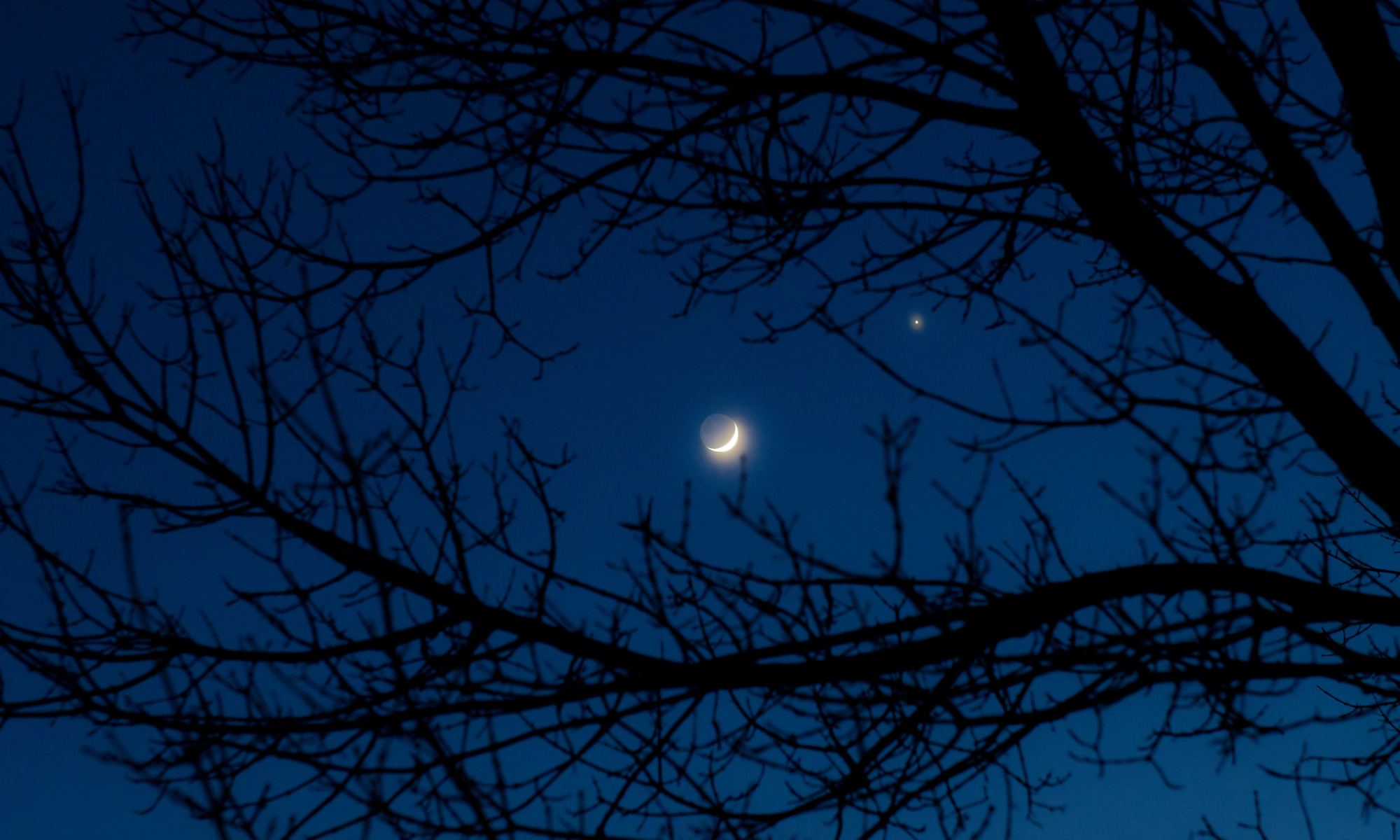Never seen Neptune? It’s time you should, and this weekend offers a fine time to try, as the faintest planet in the solar system approaches the brightest in the dusk sky, for a splendid conjunction of the pair.
This approach culminates as a fine conjunction of the two planets Venus and Neptune on January 27th at 20:00 Universal Time (UT)/3:00 PM Eastern Standard Time (EST), at just a 1/10th of a degree or 6’ apart. This is only a fifth of the diameter of a Full Moon, and easy opportunity to nab both in the same low power field of view.
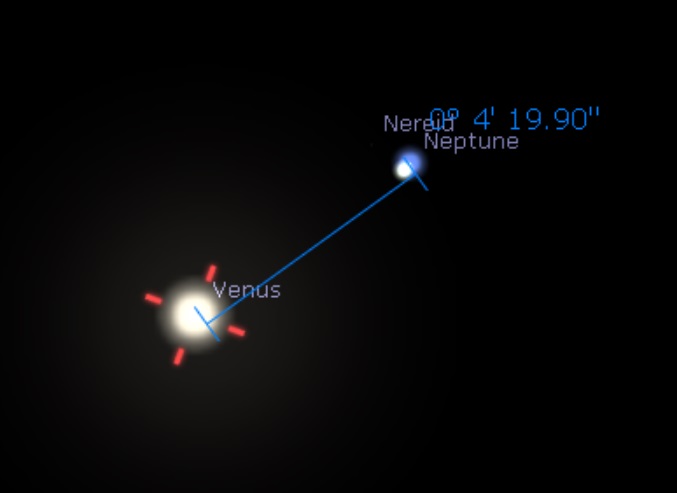
This is actually part of a series of close Venus versus Neptune conjunctions for the 21st century. An even more spectacular pass of the pair occurs next on April 7th 2022, when the pair are just 20” apart, sitting just 43 degrees western elongation from the Sun in the dawn sky. 2020 marks the second of five close passes of Venus-versus-Neptune passes for the current century.
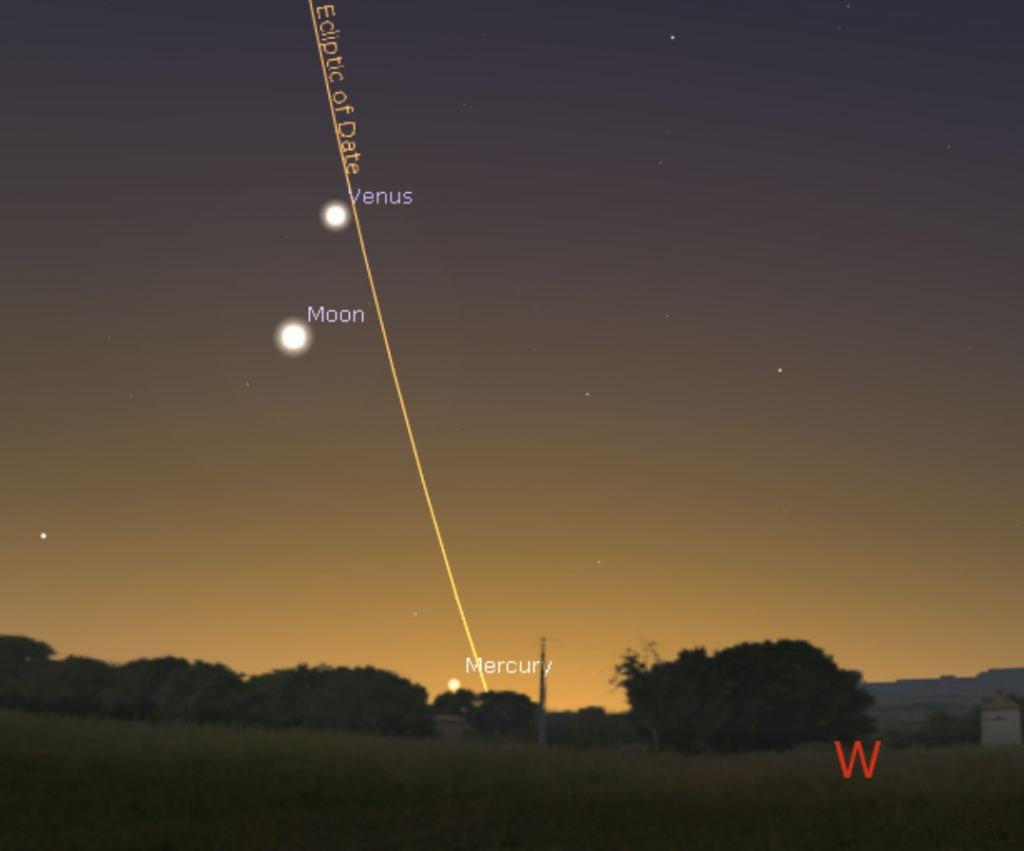
During the coming week, Venus is 40 degrees east of the Sun, shining at -4th magnitude with a 75% illuminated, 15” disk on January 27th, versus Neptune at a paltry +8th magnitude with a disk only 2.2” across. This 12 magnitude difference between the two makes for an over 63,000 times contrast in brightness, making Neptune a tough, though not impossible catch near dazzling Venus. Venus is currently bright enough to spy against a deep blue sky before sunset, and can actually cast a shadow against the high contrast of newly fallen snow after sunset.

Speaking of spotting Venus in the daytime, a good time to try is on the day after the Neptune-Venus conjunction, when the waxing crescent Moon joins the pair. The Moon actually occults (passes in front of) Venus twice in 2020: once on June 19th, and again on December 12th.
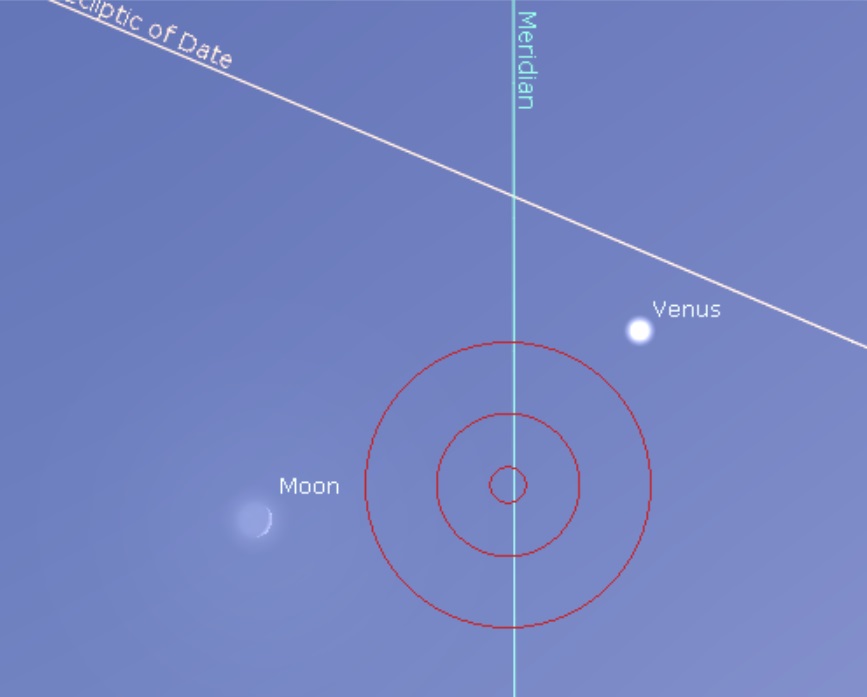
Meanwhile, you’ll need a telescope or a large pair of binoculars to nab Neptune nearby at dusk. Crank up the magnification, and Neptune may just display a hint of a tiny gray-blue disk that refuses to snap into sharp focus. Don’t confuse Neptune with the nearby +4th magnitude star Phi Aquarii, also in the area of Venus on Monday night at just 17’ away. Venus is really truckin’ through the evening sky, moving about a full degree or twice the diameter of a Full Moon from one evening to the next.
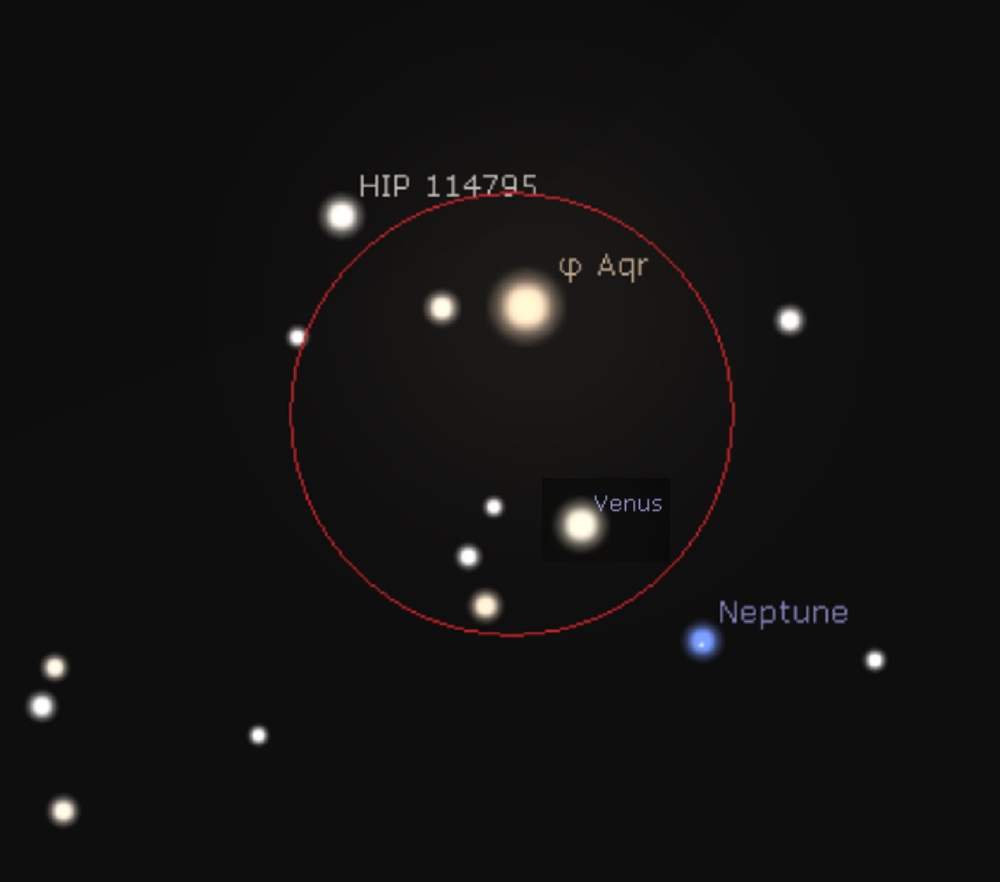
Now for the wow! factor of what you’re seeing. At 12,100 kilometers in diameter and just slightly smaller than the Earth, Venus is currently 167 million kilometers or just over nine light-minutes distant next Monday night… meanwhile, ice giant Neptune is actually 50,000 kilometers in diameter and a whopping 4.5 billion kilometers or over four light-hours away.
From Neptune, you’d see Venus and Earth just 1’ apart… but only two degrees from the Sun. Thus far, humanity has only visited Neptune once, during the Voyager 2 flyby in 1989. If a proposed Ice Giant Orbiter mission pans out, we may revisit Uranus and/or Neptune (hopefully both) in the 2030s.
Meanwhile from Venus, an observer clear of its murky atmosphere would see the pretty pair of a glittering blue-green -2.7 magnitude Earth, with a silvery +1st magnitude Moon nearby. This week’s conjunction gives us a similar view, with Neptune playing the role of a faint ‘false moon’ of Venus. 19th century astronomers actually made spurious sightings of a supposed moon of Venus that was dubbed Neith, though we now know that these claims were most likely due to passes near background stars or optical aberrations.
Venus dominates the dusk sky in the first half of 2020, headed towards inferior conjunction just 12’ from the Sun on June 3rd, before reemerging in the dawn sky for the last half of the year. Another ‘Neith-like’ event occurs on October 2nd, when Venus sits just 5’ from the bright star Regulus (Alpha Leonis) during the closest planet versus a bright star conjunction for 2020. And finally, the end of 2020 sets the stage for the best naked eye planet-versus-planet conjunction of 2020, when the two gas giants of the solar system Jupiter and Saturn meet up on December 21st.
It may be cold outside, but if you can brave the elements, clear January evenings can offer up steady skies and a chance to use the brilliant beacon of Venus to cross Neptune off of your life observing list.

